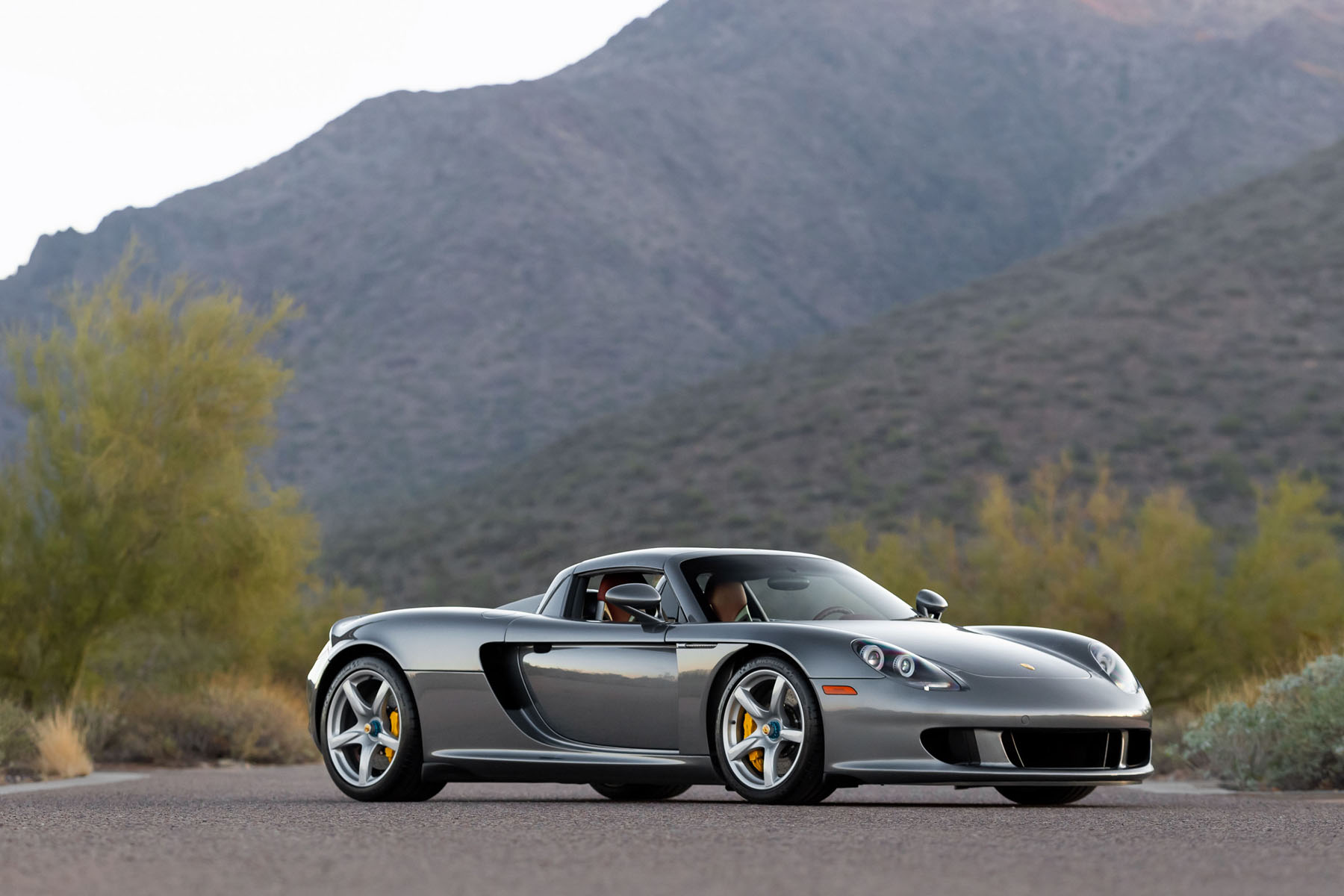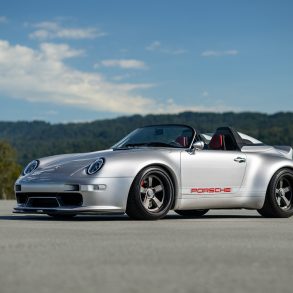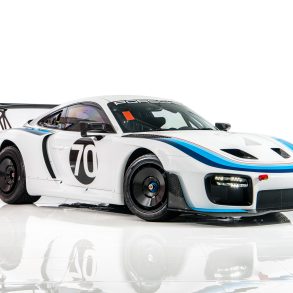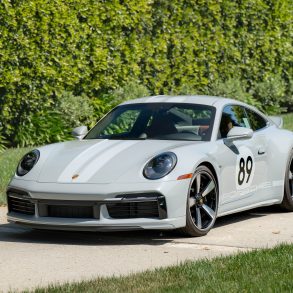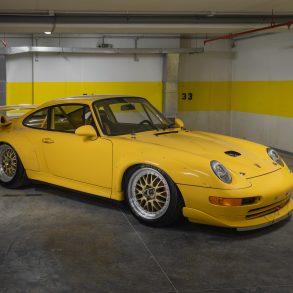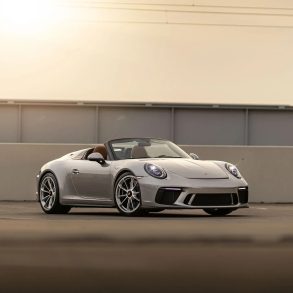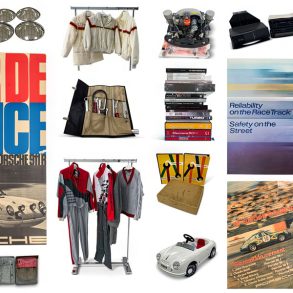Edited by Rex McAfee
End of an era:
The title of “last great analog supercar” is hotly contested, but the Porsche Carrera GT sits at the top of the list for countless enthusiasts. Advanced in its design and in its use of cutting-edge materials, the Carrera GT nevertheless offers a purist driving experience unlike anything built by major automakers today. At its heart is a naturally aspirated V-10 engine paired with a specially developed six-speed manual transmission, the sole gearbox offered. A lack of intrusive electronic driving aids made the Carrera GT a raw and challenging but immensely rewarding car to master.
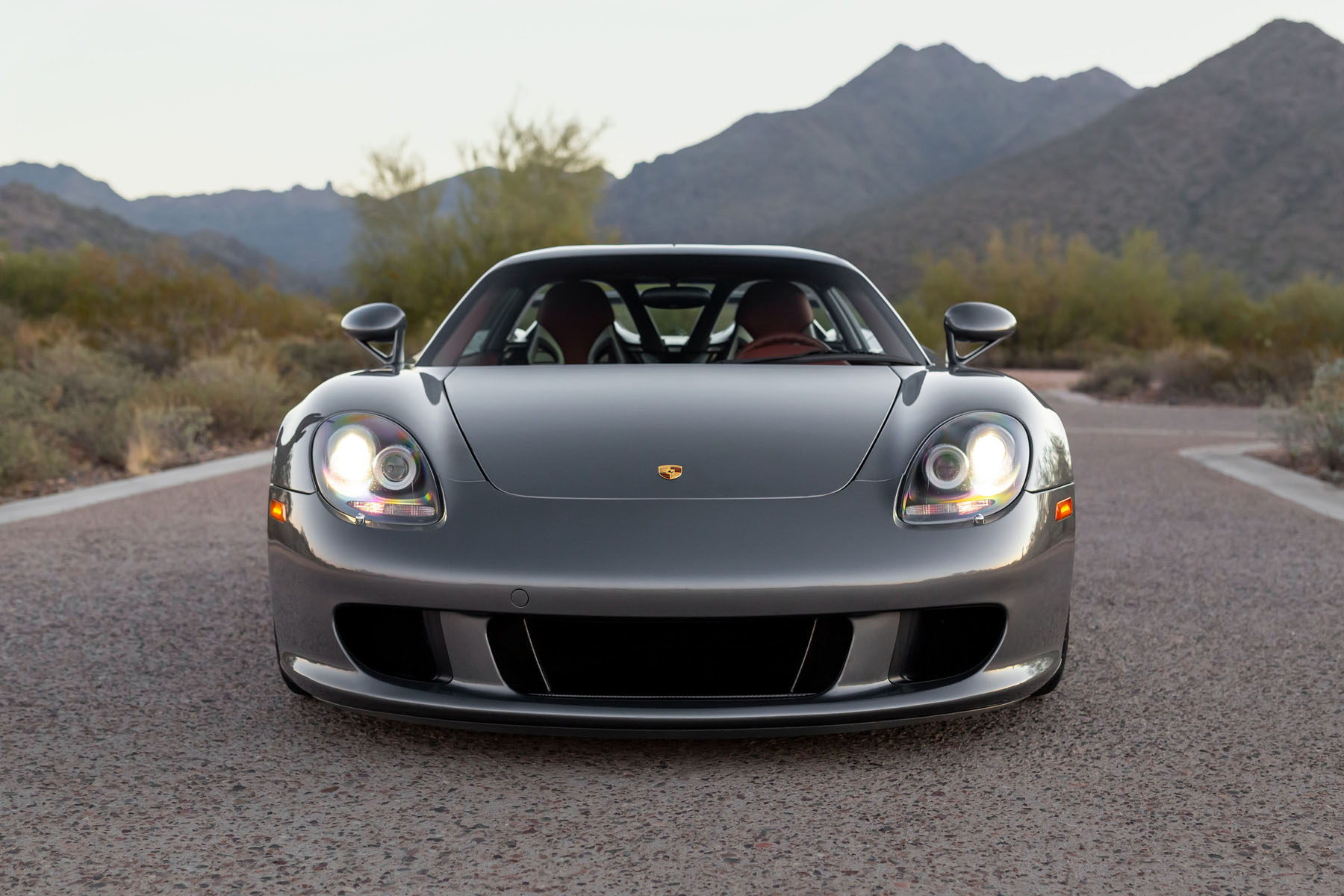
Carrera GT #0825
This Carrera GT, serial number 0825, is one of just 644 US-market examples produced between 2004 and 2006. Finished in the stunning shade of Seal Grey (Y1) over a Terracotta leather (MZ) interior, additional factory specifications included XT bucket seats, Porsche Online Pro CD radio, air conditioning, a car cover, and a set of Terracotta luggage.
Since 2005, this Carrera GT has covered 12,921 miles. In November 2022, the car was serviced by Porsche North Scottsdale, receiving an oil change and a brake fluid flush. The Carrera GT is accompanied by owner’s manuals, a center-lock wheel socket, two small pouches that fit neatly into the doors, as well as two leather straps to secure the top panels when stored in the front trunk.
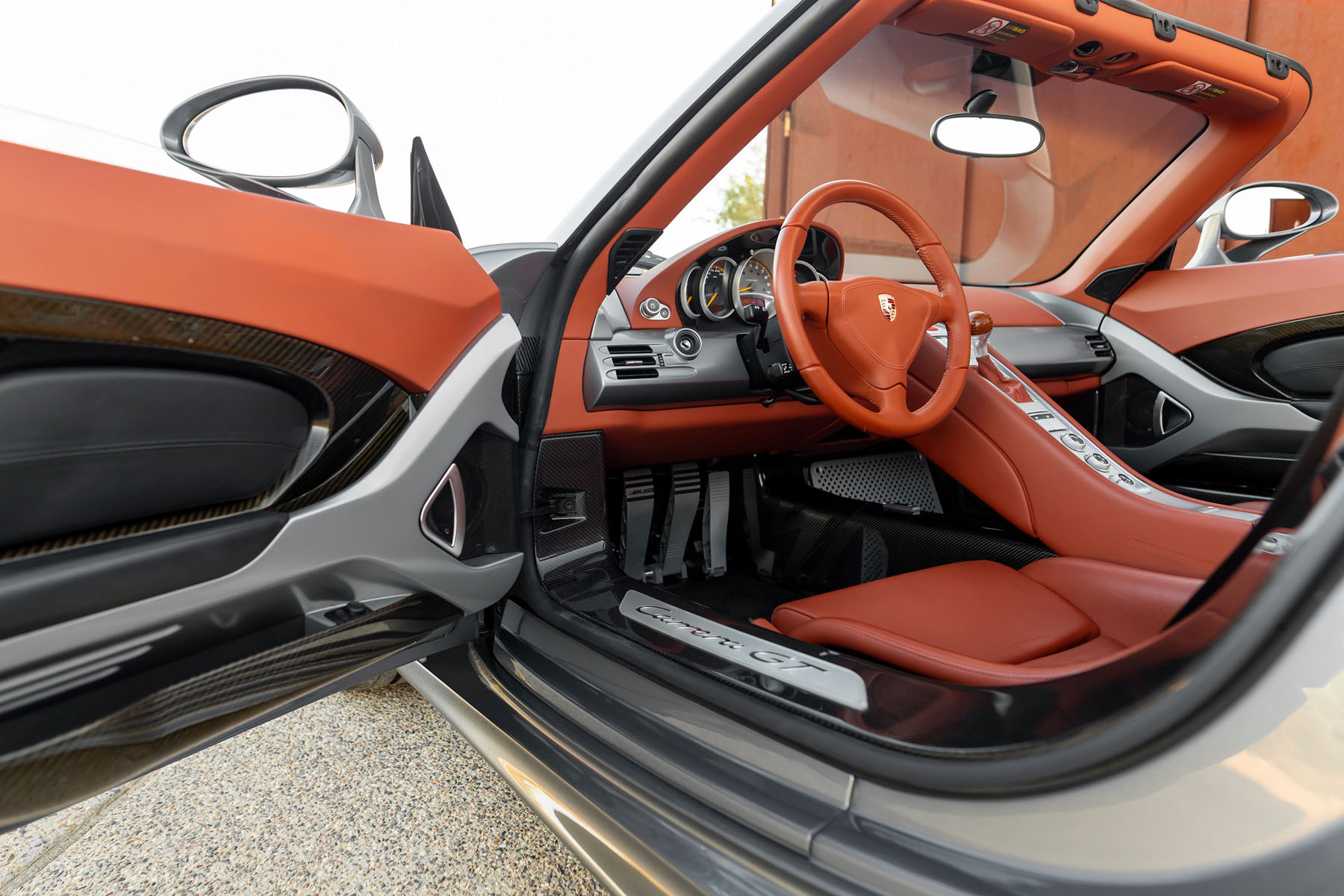
Origins of Design:
The tale of the Carrera GT’s development—and how it languished beneath shifting tides of corporate investment between 1998 and late 2003—is a complex and fascinating story. Suffice to say, this so-called “Lazarus” project found its origins in a secretive Formula One powertrain program, a Le Mans Prototype chassis, and a concept car exhibited at the 2000 Paris Motor Show. Porsche’s intensive shift toward its Cayenne SUV initially doomed this ambitious supercar project. However, the Cayenne’s massive commercial success injected the capital needed to finish the Carrera GT and present its production prototype at the 2003 Geneva Motor Show. Having resisted death several times over the course of its multi-year development, on 23 February 2003, Porsche’s Carrera GT emerged triumphantly into the limelight—and an accompanying shower of deposit slips.
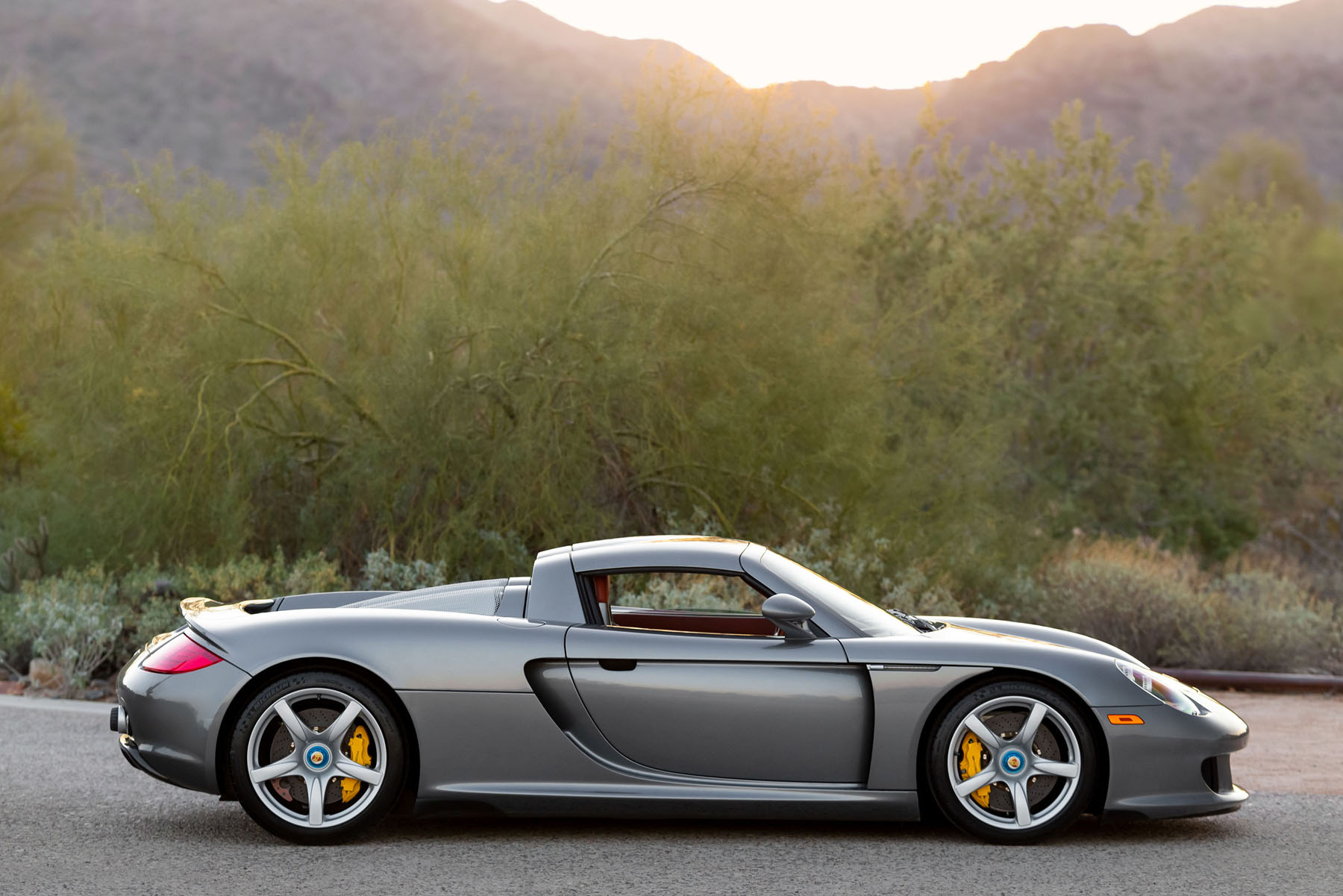
Industry Breakthroughs:
Porsche’s new supercar broke ground in many ways; it was the company’s first product to utilize an immensely strong but lightweight monocoque cabin and engine support unit of carbon fiber-reinforced plastic (CFP) with steel bracing around the windshield and passenger compartment. Chassis construction was sublet to Italian aerospace component maker ATR Composites. The front and rear suspension systems were based on a state-of-the-art racing design, with upper and lower stainless-steel wishbones and inboard-mounted, rocker-arm-operated, coil-over shock absorbers at all four corners. Huge ventilated and cross-drilled carbon-ceramic disc brakes were managed by multi-piston rear light-alloy calipers fitted behind forged magnesium-alloy center-lock road wheels.
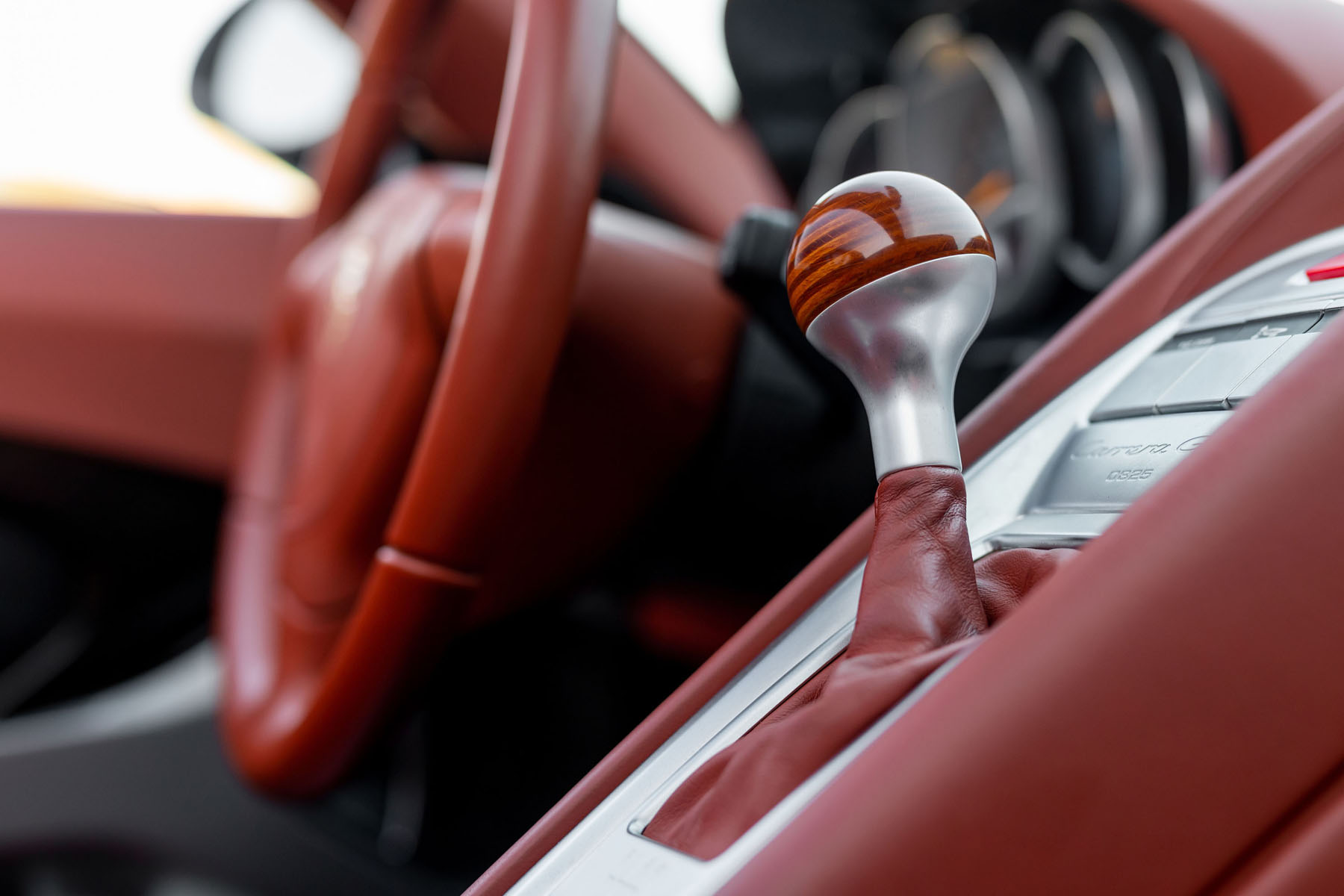
F1 Inspired:
Furthermore, the Formula One-derived V-10 engine now had a home. Sized at 5.7 liters in production form, this marvelous 40-valve powerplant developed an astonishing 613 horsepower at 8,000 RPM and 435 pounds-feet of torque at 5,750 rpm. Power was delivered through a six-speed manual transaxle. To keep the car’s center of gravity as low as possible, the engine employed dry-sump lubrication.
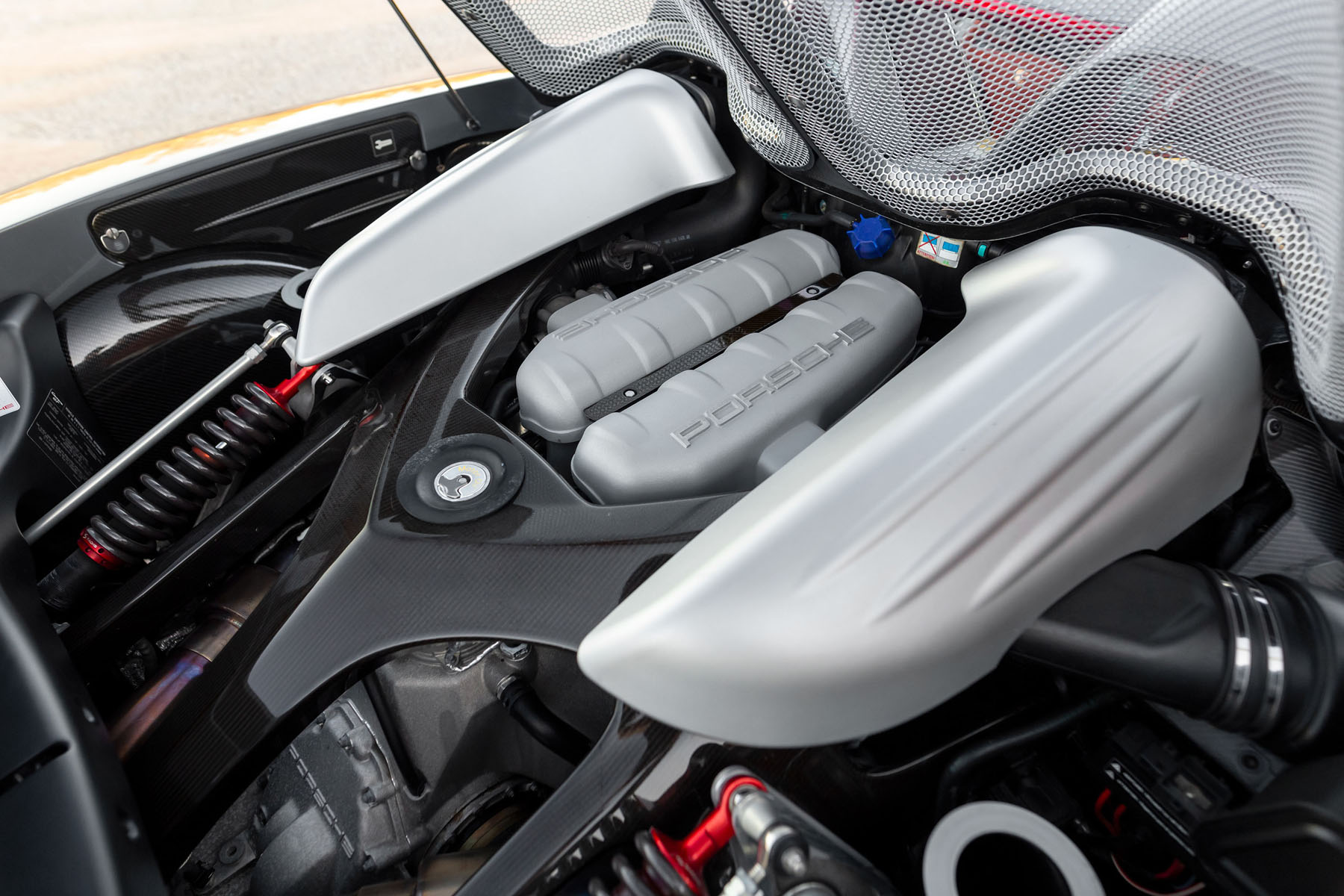
200 MPH Supercar:
The bodywork incorporated large air intake and exhaust vents, as well as a pair of removable CFP roof panels that could be stored onboard, a rear air diffuser, and a stability-enhancing rear wing that rose automatically at 75 mph. The leather interior was luxurious, with every amenity, and included a large digital information screen. The Carrera GT was fitted with numerous safety systems, including traction control and anti-lock braking, all vital to a machine capable of 0–60 times of three seconds and a maximum speed of 200 mph—quite remarkable for a normally aspirated road car.
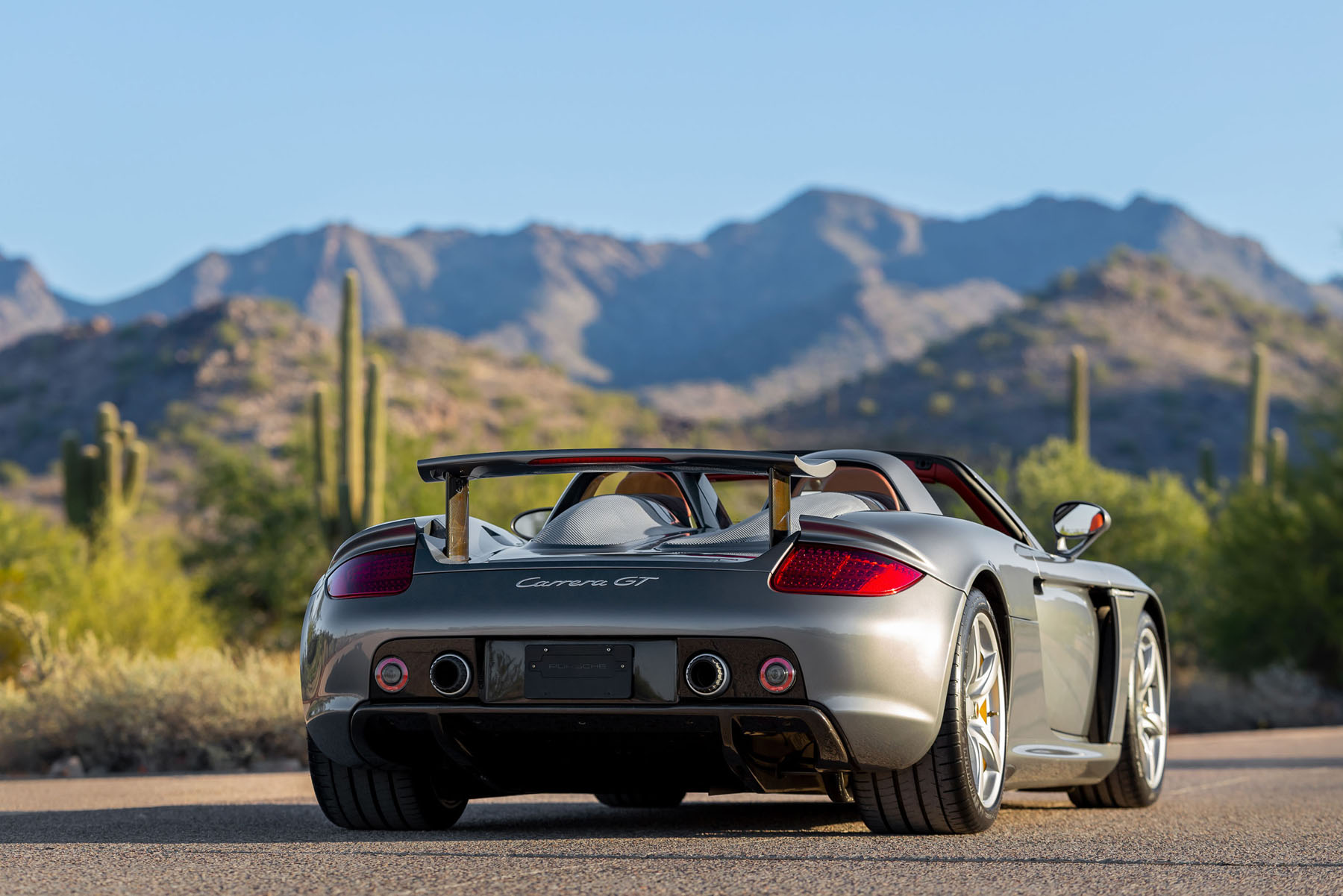
Conclusion:
Developed from Porsche’s Formula One and Le Mans programs, the Carrera GT is Porsche’s landmark hypercar, an icon of its era, and one of the last great true analog cars. This example finished in Seal Grey over Terracotta, will impress and draw the attention of discerning enthusiasts for years to come.
Ride along with Jay Leno:


